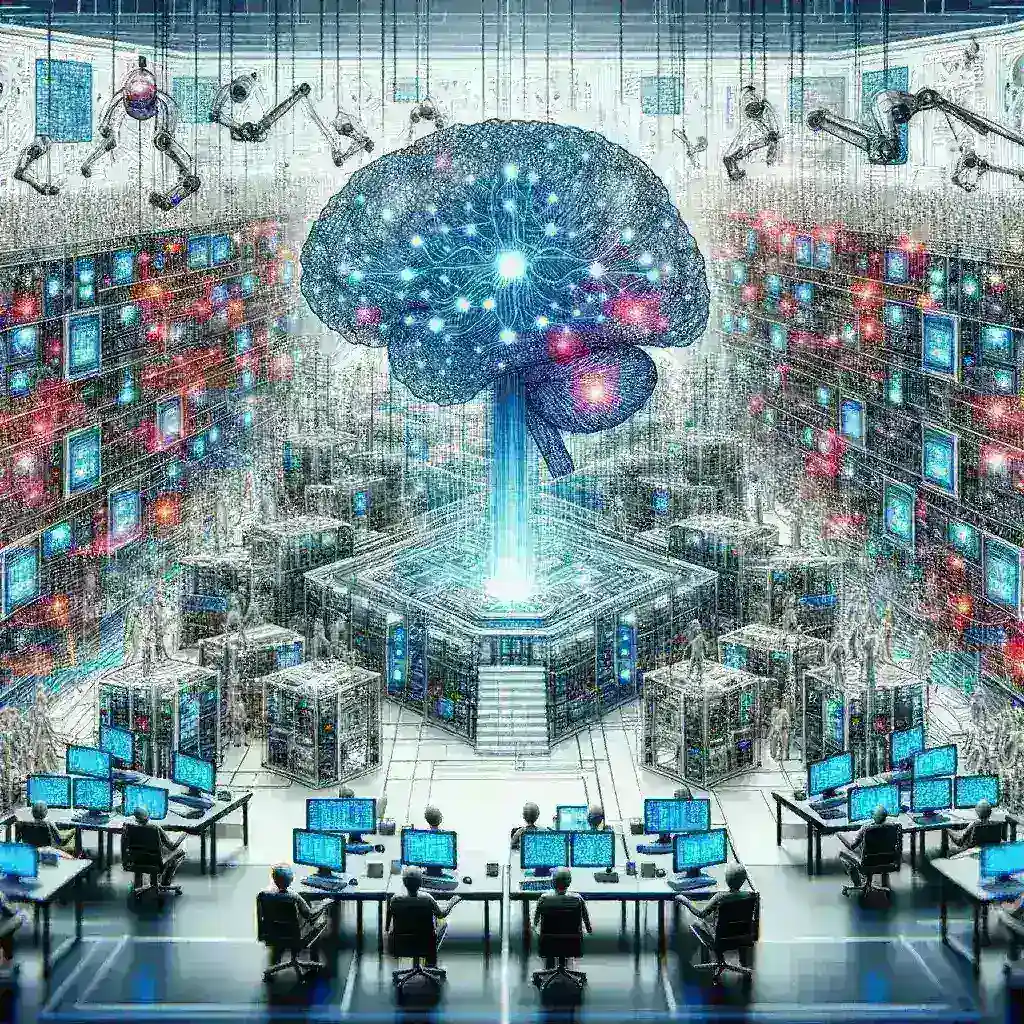Nvidia’s Vision for AI Factories
At this year’s Computex, Nvidia presented a groundbreaking vision that aims to redefine the future of factory infrastructure through advanced artificial intelligence (AI) technologies. As industries increasingly adopt AI solutions, Nvidia’s keynote highlighted how their innovations can streamline operations, enhance productivity, and foster sustainable practices in manufacturing.
The Rise of AI in Manufacturing
Manufacturing has been undergoing a significant transformation in the last decade, thanks to the advent of AI and machine learning (ML). These technologies have enabled companies to analyze vast amounts of data, optimize operations, and predict maintenance needs, thus reducing costs and increasing efficiency.
Key Components of Nvidia’s AI Factory Vision
Nvidia’s vision for AI factories encompasses several key components:
- Advanced AI Algorithms: Nvidia’s AI algorithms are designed to analyze and interpret data in real-time, enabling manufacturers to make informed decisions quickly.
- Robotic Process Automation (RPA): The integration of RPA with AI allows for the automation of repetitive tasks, freeing up human workers to focus on more complex activities.
- Digital Twin Technology: By creating digital replicas of physical assets, manufacturers can simulate and optimize operations before implementing changes on the factory floor.
- Edge Computing: With edge computing, data processing occurs closer to the source, minimizing latency and enabling faster responses to operational changes.
Benefits of AI-Driven Factories
The implementation of Nvidia’s AI factory vision presents numerous advantages:
- Enhanced Productivity: Manufacturers can expect significant increases in productivity levels as AI technologies streamline operations and reduce downtime.
- Improved Quality Control: AI systems can quickly identify defects in products, ensuring that only the highest quality goods reach consumers.
- Sustainability: AI-driven insights allow companies to optimize resource usage and minimize waste, promoting more sustainable manufacturing practices.
- Cost Reduction: Automating processes leads to lower labor costs and reduced operational expenses.
Historical Context of AI in Manufacturing
The integration of AI into manufacturing is not a recent phenomenon. The journey began with the introduction of automation in the late 20th century. As technology evolved, so did the complexity of processes. Today, AI is at the forefront of this evolution, marking a new era in industrial capability.
Future Predictions
Experts predict that the future of manufacturing will be heavily influenced by AI technologies. By 2030, it is estimated that over 70% of manufacturing processes will incorporate AI in some form. This shift will not only enhance operational efficiency but also create new job roles focused on managing and developing AI systems.
Challenges Ahead
While the prospects seem bright, the path to fully embracing AI in manufacturing is fraught with challenges:
- Skill Gap: There is a pressing need for a workforce skilled in both AI and traditional manufacturing processes.
- Data Privacy Concerns: As factories become more interconnected, protecting sensitive data becomes increasingly critical.
- Cost of Implementation: The initial investment for transitioning to AI-driven systems can be substantial, posing a barrier for some businesses.
Nvidia’s Role in the AI Landscape
Nvidia has established itself as a leader in AI technology, providing tools and frameworks that empower manufacturers to implement AI solutions effectively. Their platforms, such as the Nvidia Omniverse, facilitate collaboration and simulation, allowing businesses to visualize their manufacturing processes in real-time.
Real-World Examples
Several leading manufacturers have already implemented Nvidia’s AI technologies, witnessing remarkable transformations:
- Ford: Utilizing AI to enhance vehicle production efficiency, Ford has integrated machine learning to optimize assembly line processes.
- Siemens: This company employs AI and digital twins to anticipate maintenance needs, significantly reducing downtime and costs.
- Boeing: Boeing uses predictive analytics powered by AI to streamline its supply chain and improve delivery timelines.
Conclusion
Nvidia’s presentation at Computex has set the stage for the future of manufacturing, where AI-driven infrastructure is poised to redefine industry standards. As businesses continue to embrace these technologies, they must navigate the challenges while capitalizing on the numerous benefits that AI offers. Embracing this transformation will not only propel manufacturers to new heights but also contribute to a more sustainable and efficient future.



